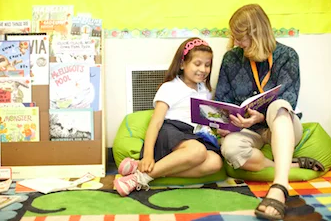In the digital age, students have access to a world of books without ever stepping into a physical library. Online libraries have emerged as powerful tools for supporting literacy, offering a wide variety of reading materials that cater to all ages, interests, and learning levels. With the right platforms, students can explore new genres, improve reading comprehension, and foster a lifelong love of learning.
Why Online Libraries Matter
Online libraries break down barriers to access by making books available anytime, anywhere. Whether students are learning at home, in the classroom, or on the go, these digital resources ensure that reading materials are always within reach. Many platforms also offer customizable reading levels, audio support, and interactive features that enhance understanding and engagement.
Top Online Libraries for Students
- Epic!
Designed for children 12 and under, Epic! offers thousands of high-quality books, audiobooks, and educational videos. With built-in quizzes and progress tracking, it’s a favorite among teachers and parents alike. - International Children’s Digital Library (ICDL)
ICDL provides access to children’s books from around the globe in multiple languages. It’s a valuable tool for promoting cultural literacy and supporting bilingual learners. - Open Library
A part of the Internet Archive, Open Library offers millions of digitized books for free, including classics, textbooks, and young adult fiction. Students can borrow books as if they were in a physical library. - Libby by OverDrive
This app connects students to their local public library’s digital collection. With a library card, they can borrow ebooks and audiobooks directly on their devices. - Oxford Owl
Developed by Oxford University Press, Oxford Owl offers free access to ebooks for young readers and provides helpful resources for parents and teachers.
Benefits for Educators and Families
Online libraries are more than just convenient—they also support academic success. Teachers can assign specific books aligned with curriculum goals, while families can use them to encourage reading at home. Many platforms track student progress and offer recommendations based on reading history, making it easier to tailor materials to individual needs.
Fostering a Love of Reading in the Digital World
Incorporating online libraries into a student’s daily routine builds habits that last a lifetime. By giving students access to engaging, age-appropriate content on a regular basis, these platforms help create enthusiastic and confident readers.
Conclusion
Online libraries have revolutionized student access to literature. They provide a diverse range of books, flexible reading formats, and tools that support every learner. For educators and families looking to inspire the next generation of readers, these digital resources offer an invaluable starting point.














